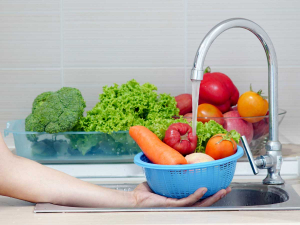It's all about economics
OPINION: According to media reports, the eye-watering price of butter has prompted Finance Minister Nicola Willis to ask for a 'please explain' from her former employer Fonterra.
 Countdown claims higher supplier costs are responsible for an increase in the cost of food at the checkout.
Countdown claims higher supplier costs are responsible for an increase in the cost of food at the checkout.
Countdown says cost increases requested by suppliers averaged 8%, in line with the Food Price Index for August.
The Food Price Index for August 2022 increased by 8.4%, according to Stats NZ, the largest annual increase since July 2009.
Grocery food was the largest contributor to the movement, increasing by 8.7%.
“Increasing prices for eggs, yoghurt, and cheddar cheese were the largest drivers within grocery food,” says Stats NZ consumer prices manager Katrina Dewbery.
Vegetable prices also had a sizeable impact on the monthly rise, with tomatoes, capsicums, and cabbage among the largest contributors, Dewbery says.
Countdown says it received four times the number of cost increase requests from its suppliers last month compared to August 2021.
Requests ranged from a 1% increase to a 72% increase.
Countdown commercial director, Steve Mills says that New Zealand isn’t alone in the increases, with the United Kingdom experiencing a 14-year high food inflation of 12.6% in July, and the United States seeing food inflation reach 10.9%.
“We pay our growers and farmers market prices for meat, dairy, fruit and vegetables, so higher international and local prices are reflected in what customers are paying for their food at the checkout,” Mills says.
“Compounding this, a large portion of the products Kiwis rely on are imported from overseas, such as bananas, flour, pasta and toiletries. Inflation on imported products is roughly double that of local products,” he says.
“We understand the genuine cost pressures suppliers are under, whether that’s input costs like grain, fertiliser and freight, or domestic factors such as labour shortages and increased wage rates.
“However, we also know that our customers are facing higher cost of living pressures from all parts of the economy, not just groceries. Our job remains focused on balancing all the different pressures and costs we are experiencing to provide the best value we can.”
According to ASB, Fonterra's plan to sell it's Anchor and Mainlands brands could inject $4.5 billion in additional spending into the economy.
New Zealand’s trade with the European Union has jumped $2 billion since a free trade deal entered into force in May last year.
The climate of uncertainty and market fragmentation that currently characterises the global economy suggests that many of the European agricultural machinery manufacturers will be looking for new markets.
Dignitaries from all walks of life – the governor general, politicians past and present, Maoridom- including the Maori Queen, church leaders, the primary sector and family and friends packed Our Lady of Kapiti’s Catholic church in Paraparaumu on Thursday October 23 to pay tribute to former prime Minister, Jim Bolger who died last week.
Agriculture and Forestry Minister, Todd McClay is encouraging farmers, growers, and foresters not to take unnecessary risks, asking that they heed weather warnings today.
With nearly two million underutilised dairy calves born annually and the beef price outlook strong, New Zealand’s opportunity to build a scalable dairy-beef system is now.